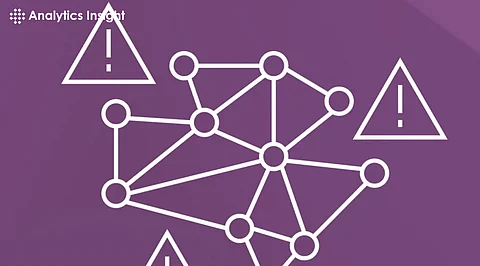

Advances in artificial intelligence have transformed businesses by simplifying processes and streamlining tasks. However, these technologies also have a dark side. GhostGPT, a type of generative AI model, has increasingly been exploited by hackers to develop advanced malware and exploits that pose a major threat to cybersecurity efforts.
GhostGPT is an AI model developed for text output based on a particular input. Although initially it was used to create auto-content or generate code snippets, it has been found to have malicious usage in the hands of cybercriminals. Hackers have leveraged GhostGPT's ability to create complex code to create complex malware and take advantage of system vulnerabilities with ease like never before.
This kind of abuse is increasing in the cybercrime world, where generative AI is being exploited as a tool. GhostGPT's capacity for handling enormous amounts of data and producing outputs identical to human output enables cybercriminals to outsmart conventional detection mechanisms. It brings down the bar of malware development and makes it more sophisticated.
GhostGPT's coding capacity makes it an appealing weapon of choice for malicious software development. Hackers may enter commands to create code with a variety of malicious uses, including:
GhostGPT can be used to create ransomware, spyware, and trojan scripts. These scripts are employed to breach systems, steal confidential information, or disrupt operations.
Cybercriminals often use GhostGPT to refine and enhance existing malware code. This improves the effectiveness of their attacks by making the malware harder to detect and counteract.
The tool’s advanced algorithms allow hackers to identify and exploit system weaknesses. By generating customized code to exploit these vulnerabilities, they can gain unauthorized access to sensitive data or systems.
Exploits are techniques or tools employed to exploit software, hardware, or network vulnerabilities. The capacity of GhostGPT to process technical information and produce accurate output makes it ideally suited for use in creating exploits.
Insight into Vulnerability Reports: GhostGPT can analyze challenging vulnerability reports and generate code to exploit the vulnerabilities outlined.
Create Zero-Day Exploits: GhostGPT can be used by hackers to create zero-day exploits with system or software documentation in hand. These exploits target vulnerabilities that developers have not yet patched.
Simulate Attacks: The ability of the AI to simulate attacks helps hackers test their exploits before deployment, which maximizes the rate of success.
GhostGPT's popularity in cybercrime has enhanced the availability and effectiveness of hacking. Various reasons make it increasingly popular with bad actors:
Ease of Use: GhostGPT’s user-friendly interface allows even less-experienced hackers to generate sophisticated malware and exploits.
Anonymity: Cybercriminals can use the tool without disclosing their identities, thus making it more difficult for authorities to track their activities.
Speed and Efficiency: Generative AI makes creating malware or exploits much quicker and easier and allows hackers to scale operations.
Increased Obscurity: The malware and exploits produced by GhostGPT are highly advanced and more challenging to trace because they can evade regular antivirus and security measures.
The misuse of GhostGPT has increased the threat level for cybersecurity professionals. Traditional defense practices like signature-based detection are no longer effective regarding threats produced by AI. Since GhostGPT can create unique high-level malware, the amount and sophistication of cyberattacks are increased.
Organizations are now placing emphasis on creating sophisticated security solutions, including AI-powered threat detection systems, to counter such emerging threats. Further, ethical AI frameworks and more stringent regulations are being proposed to restrict the abuse of generative AI tools like GhostGPT.
To mitigate the threats created by GhostGPT, some actions can be undertaken:
Integrating AI Detection Tools: Sophisticated AI solutions that can recognize and interpret the generative AI's output are required to detect threats created by GhostGPT.
Aggressive Updates of Software: System and software updates will remove the possible vulnerabilities that can be exploited by AI-generated malware.
Ethical Responsible Using Ethical AI: This includes the ethical designing and use of generative AI technology that prevents the misusing of the technology.
Advanced Cyber Security Training: Companies must train employees and IT professionals in AI-based cyber threats.
The misuse of GhostGPT by hackers has opened a new horizon for cybercrime, with AI-driven malware and exploits pushing traditional cybersecurity defenses to their limits. A collective response from technology innovators, cybersecurity experts, and policymakers is needed to mitigate this problem. Neutralizing the danger posed by generative AI tools becomes possible by anticipating such threats and developing strong countermeasures.
